Common Cerebral Palsy Treatment Methods
There is no cure for cerebral palsy because it is caused by permanent brain damage. However, there are treatment options available to manage the condition.
Cerebral palsy treatment typically aims to ease painful symptoms, improve overall mobility, and improve quality of life. There are several common forms of treatment that are used to treat cerebral palsy.
Common cerebral palsy treatment options include:
- Alternative therapy
- Medication
- Occupational therapy
- Physical therapy
- Speech therapy
- Surgery
Depending on the severity of your child’s cerebral palsy, different treatment plans may be recommended. Your child’s pediatric specialist and/or neurologist will consider the severity of symptoms, type of cerebral palsy, and any coexisting conditions when developing a treatment plan that best meets your child’s needs.
Speak with one of our caring registered nurse advocates to learn which treatment methods might be best for your child’s condition.
Therapy Options for Cerebral Palsy
One of the most common forms of cerebral palsy treatment is therapy. Different types of therapy can help improve the quality of life of a child with cerebral palsy.
Depending on your child’s symptoms and developmental delays, they may require a combination of a few types of therapy to improve movement and communication skills.
Learn more about different types of cerebral palsy therapy below.
Physical Therapy
Physical therapy uses specially designed exercises to improve the overall mobility and muscle function of a child with cerebral palsy. Children with mild or severe cerebral palsy symptoms may benefit from physical therapy.
Physical therapy aims to:
- Control jerky, spastic movements
- Fix fluctuating muscle tone
- Improve balance and coordination
- Improve standing, walking, etc.
- Loosen tight muscles
- Strengthen loose muscles
Physical therapists use exercise equipment and orthotics, such as braces or splints, to improve a child’s overall movement. Physical therapy can also manage and improve the symptoms of any type of cerebral palsy.
Physical therapy can be used to treat any type of cerebral palsy.
Occupational Therapy
Occupational therapy is used to help those with cerebral palsy become more independent while performing daily activities at home, school, or in other environments.
This type of therapy focuses on refining fine motor skills of the arms, wrists, hands, and fingers.
Occupational therapy can help children complete daily tasks such as:
- Bathing
- Brushing teeth or hair
- Drawing
- Dressing
- Drinking from a cup
- Eating
- Writing
Occupational therapists provide children and parents with recommendations for changing the child’s environment to make playing and learning more effective. They may also suggest adaptive equipment designed to increase independence in children with cerebral palsy.
Speech Therapy
Cerebral palsy can affect muscles in the mouth and tongue, so some children may have a hard time speaking clearly and may experience frequent drooling.
Speech therapy is very useful in these cases. Therapists can help children and families learn to communicate more effectively through sign language, communication boards, and more. They can also provide guidance on how to use helpful communication devices such as computers and voice synthesizers.
Alternative Therapies
There are other alternative therapy options in addition to more traditional forms of cerebral palsy therapy.
Alternative therapy options include:
- Acupuncture: This therapy uses small needles that are put into specific areas of the body to release tension in tight muscles.
- Aquatic therapy: Water takes pressure off tense muscles and allows children to move more freely to strengthen and calm their muscles.
- Hippotherapy (horse therapy): This therapy helps improve children’s mobility, posture, and balance while horseback riding.
- Music therapy: Using musical instruments can help children improve their cognitive, auditory, and fine motor functions.
IS YOUR CHILD MISSING DEVELOPMENTAL MILESTONES?
Take Our Milestones Quiz
Taking note of your child’s physical, social, and emotional skills can help you determine if they potentially suffered from an injury at birth. An early diagnosis can help your child get the treatment they need as soon as possible.
Q1: How old is your child?
0-2 MONTHS DEVELOPMENTAL MILESTONES QUIZ
- Q2: Can your child hold their head steadily on their own?
- Q3: Can your child push themselves up when they are lying on their stomach?
- Q4: Has your child started to make smoother movements with their arms and legs?
- Q5: Does your child smile at other people?
- Q6: Can your child bring their hands to their mouth?
- Q7: Does your child turn their head when they hear a noise?
- Q8: Does your child coo or make gurgling noises?
- Q9: Does your child follow things with their eyes?
- Q10: Does your child try to look at their parents or caregivers?
- Q11: Does your child show boredom, cry, or fuss when engaged in an activity that hasn’t changed in a while?


3-4 MONTHS DEVELOPMENTAL MILESTONES QUIZ
- Q2: Can your child hold their head steadily on their own?
- Q3: Does your child push down on their legs when their feet are on a flat surface?
- Q4: Has your child started to roll over from their stomach to their back?
- Q5: Can your child hold and shake a toy such as a rattle?
- Q6: Does your child bring their hands to their mouth?
- Q7: Does your child play with people and start to cry when the playing stops?
- Q8: Does your child smile spontaneously, especially at people?
- Q9: Does your child copy some movements and facial expressions of other people?
- Q10: Does your child babble with expressions and copy sounds they hear?
- Q11: Does your child cry in different ways to show hunger, pain, or tiredness?
- Q12: Does your child respond to affection like hugging or kissing?
- Q13: Does your child follow moving things with their eyes from side to side?
- Q14: Does your child recognize familiar people at a distance?


5-6 MONTHS DEVELOPMENTAL MILESTONES QUIZ
- Q2: Can your child roll over on both sides (front to back/back to front)?
- Q3: Has your child begun to sit without support?
- Q4: Does your child rock back and forth?
- Q5: Can your child support their weight on their legs (and perhaps bounce) when standing?
- Q6: Has your child begun to pass things from one hand to the other?
- Q7: Does your child bring objects such as toys to their mouth?
- Q8: Does your child know if someone is not familiar to them and is a stranger?
- Q9: Does your child respond to other people’s emotions, such as a smile or a frown?
- Q10: Does your child enjoy looking at themselves in the mirror?
- Q11: Does your child look at things around them?
- Q12: Does your child respond to sounds they hear by making sounds themselves?
- Q13: Does your child make sounds to show joy or displeasure?
- Q14: Does your child respond to their own name?
- Q15: Has your child started to string vowels together, such as "ah," "eh," or "oh," or started to say consonant sounds such as "m" or "b"?
- Q16: Has your child begun to laugh?
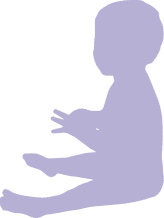

7-9 MONTHS DEVELOPMENTAL MILESTONES QUIZ
- Q2: Can your child crawl?
- Q3: Can your child stand while holding on to something to support them?
- Q4: Can your child sit without support?
- Q5: Can your child pull themselves up to stand?
- Q6: Does your child play peekaboo?
- Q7: Can your child move things from one hand to the other?
- Q8: Can your child pick small things up, such as a piece of cereal, with their thumb and index finger?
- Q9: Does your child look for things that they see you hide?
- Q10: Does your child watch the path of something as it falls?
- Q11: Does your child show fear when around strangers?
- Q12: Does your child become clingy with adults who are familiar to them?
- Q13: Does your child have favorite toys?
- Q14: Does your child use their fingers to point?
- Q15: Does your child understand “no”?
- Q16: Does your child make a lot of repetitive sounds, such as “mamama” or “bababa”?
- Q17: Does your child copy the sounds and gestures of other people?
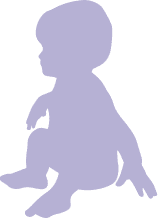

10-12 MONTHS DEVELOPMENTAL MILESTONES QUIZ
- Q2: Can your child stand alone with no support?
- Q3: Does your child walk while holding on to furniture?
- Q4: Can your child take a few steps without holding on to anything?
- Q5: Can your child get into a sitting position without any help?
- Q6: Does your child bang two things together when playing?
- Q7: Does your child poke with their index finger?
- Q8: Has your child started to use things like hairbrushes or drinking cups correctly?
- Q9: Does your child find hidden objects easily?
- Q10: Does your child play peekaboo or pat-a-cake?
- Q11: Does your child become shy or nervous around strangers?
- Q12: Does your child repeat actions or sounds to get attention?
- Q13: Does your child put out an arm or leg to help when getting dressed?
- Q14: Does your child cry when a parent leaves the room?
- Q15: Does your child show that they have favorite things or people?
- Q16: Does your child show fear?
- Q17: Does your child say things such as “mama,” “dada,” or “uh-oh”?
- Q18: Does your child try to say the words you say?
- Q19: Has your child started to use gestures like waving or shaking their head “no”?
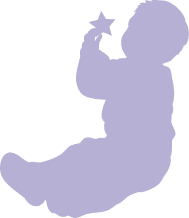

13-18 MONTHS DEVELOPMENTAL MILESTONES QUIZ
- Q2: Can your child walk by themselves?
- Q3: Does your child walk up stairs and run?
- Q4: Does your child pull toys while walking?
- Q5: Can your child drink from a cup on their own?
- Q6: Can your child eat with a spoon on their own?
- Q7: Can your child help undress themselves?
- Q8: Does your child have occasional temper tantrums?
- Q9: Does your child show affection to familiar people?
- Q10: Does your child become clingy in new situations?
- Q11: Does your child explore their environment alone with parents close by?
- Q12: Can your child say several single words?
- Q13: Can your child say and shake their head “no”?
- Q14: Does your child point to show things to other people?
- Q15: Does your child scribble?
- Q16: Does your child know what ordinary products such as phones, spoons, and brushes are used for?
- Q17: Can your child follow one-step commands such as “sit down” or “stand up”?
- Q18: Does your child play with a doll or stuffed animal by pretending to feed it?


19-23 MONTHS DEVELOPMENTAL MILESTONES QUIZ
- Q2: Has your child begun to run?
- Q3: Has your child kicked a ball?
- Q4: Can your child climb down and onto furniture on their own?
- Q5: Can your child walk up and down stairs while holding on?
- Q6: Can your child stand on their tiptoes?
- Q7: Has your child thrown a ball overhand?
- Q8: Does your child copy others, especially people older than them?
- Q9: Does your child get excited around other children?
- Q10: Has your child shown more independence as they've aged?
- Q11: Does your child do what they were told not to do and become defiant?
- Q12: Does your child point to things when they are named?
- Q13: Does your child know names of familiar people or body parts?
- Q14: Does your child say 2 to 4-word sentences?
- Q15: Does your child repeat words they hear?
- Q16: Does your child complete sentences and rhymes in familiar books?
- Q17: Does your child name items in books, such as dogs, cats, and birds?
- Q18: Does your child play simple pretend games?
- Q19: Has your child started to use one hand more than the other?
- Q20: Has your child begun to sort shapes and colors?
- Q21: Does your child follow 2-step instructions, such as “pick up your hat and put it on your head?”


24+ MONTHS DEVELOPMENTAL MILESTONES QUIZ
- Q2: Can your child run easily?
- Q3: Can your child climb?
- Q4: Can your child walk up and down stairs with one foot on each step?
- Q5: Can your child dress and undress themselves?
- Q6: Does your child show affection for friends without being told?
- Q7: Does your child take turns when playing games?
- Q8: Does your child show concern when others are crying?
- Q9: Does your child understand the idea of “mine" and "theirs"?
- Q10: Does your child show many different emotions?
- Q11: Does your child copy adults and friends?
- Q12: Does your child separate easily from their parents?
- Q13: Does your child get upset when there is a major change in their routine?
- Q14: Does your child say words such as “I,” “me,” “we,” “you,” and some plural nouns?
- Q15: Can your child say their first name, age, and gender?
- Q16: Can your child carry on a conversation with 2 to 3 sentences?
- Q17: Can your child work toys with buttons and other moving parts?
- Q18: Does your child play pretend with dolls, animals, or people?
- Q19: Can your child finish 3 or 4 piece puzzles?
- Q20: Can your child copy a circle when drawing?
- Q21: Can your child turn pages of a book one page at a time?
- Q22: Can your child turn door handles?
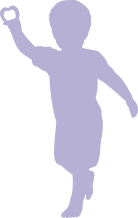

Medication for Cerebral Palsy
Medication can be an effective treatment method for many symptoms of cerebral palsy. Since the symptoms of cerebral palsy vary from person to person, the medications to treat them depend on which symptoms are prevalent.
There are different types of medications to combat symptoms such as seizures and muscle tightness/spasticity that often appear in cases of cerebral palsy.
Common medications for spasticity include:
- Baclofen
- Dantrium®
- Valium®
- Zanaflex®
Common medications for seizures include:
- Depakote®
- Dilantin®
- Lamictal®
- Tegretol®
- Trileptal®
Some children may not need medication if they are not experiencing spasticity or epilepsy.
Many children with cerebral palsy may also be diagnosed with other co-occurring conditions that may require medication, such as digestive, oral, behavioral, respiratory, or skin problems.
Surgery for Cerebral Palsy
Doctors may recommend surgery for cerebral palsy if other treatments do not improve impairments. However, surgery is often considered a last resort.
There are surgeries that may help reduce certain cerebral palsy symptoms, such as spasticity and contractures. Surgery may be needed if symptoms do not respond well to treatment over time or cause complications that cannot be eased by therapy.
Types of cerebral palsy surgeries include:
- Baclofen pump implantation: Permanently installs a medical device that pumps baclofen to the spinal cord to treat spastic movements
- Muscle lengthening: Stretches out tight muscles to help improve a child’s fine motor skills
- Selective dorsal rhizotomy: Cuts nerves connecting the muscles to the spinal cord to reduce spasticity
- Stereotactic surgery: Uses X-ray beams on the brain and spinal cord to treat spastic and athetoid cerebral palsy symptoms
- Tendon lengthening: Fixes permanently tightened tendons to improve a child’s motor function
- Tenotomy: Cuts the tendons to improve a child’s ability to move and possibly prevent hip dislocation
Some children with cerebral palsy may not qualify for certain surgeries, depending on their diagnosis and symptoms. It is important to consult with your doctor to find out which treatment option is best for your child.
Can Treatment Cure Cerebral Palsy?
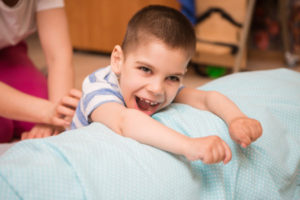

Researchers are currently studying how to cure cerebral palsy and other permanent brain disorders.
In the meantime, you can help your child by seeking treatment right away. Cerebral palsy treatment should begin as soon as symptoms are noticed. Early intervention from your child’s doctor can help prevent permanent movement issues and get your child the help they need as soon as possible.
Get Help Paying for Cerebral Palsy Treatment
Unfortunately, many cases of cerebral palsy are caused by medical negligence. Doctors, nurses, and other health care professionals who make mistakes during childbirth can cause major birth injuries such as cerebral palsy.
According to the Centers for Disease Control and Prevention (CDC), the average lifetime cost to care for a child with cerebral palsy is around $1 million. Parents and caregivers should not have to pay for a child’s cerebral palsy treatment if their condition was preventable.
Thankfully, there are options for your family to access financial compensation for your child’s injury. Filing a cerebral palsy lawsuit can help you get the money and justice you deserve.
To see if you qualify to take legal action, get a free case review today.






